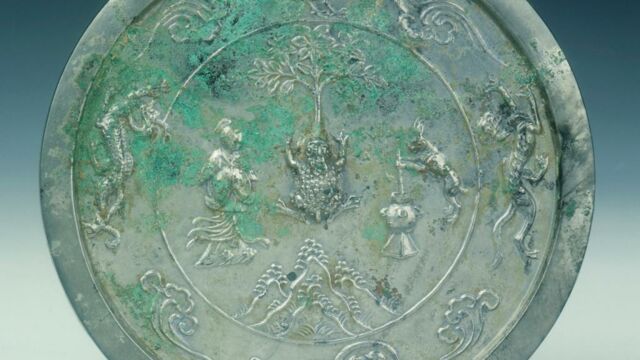A rare Chinese 'magic mirror' has been discovered by curators in storage at the Cincinnati Art Museum.
Discover our latest podcast
A case of mistaken identity
What was initially thought to be an unassuming bronze disc is actually an extremely rare 'magic mirror.' The mirror was found amongst the museum’s East Asian art collection which contains 100,000 works.
Magic mirrors, otherwise known as transparent or light penetrating mirrors, were first produced in China during the Han dynasty approximately 2,000 years ago (202 BCE–220 CE), before being made in Japan later on in the 19th century. According to the museum:
When light is projected on them, the mirrors appear transparent and reveal characters or a decorative design.
Hou-mei Sung, curator of East Asian art, told Artnet News:
It’s really fate or luck. We were going to put the bronze artwork on view in a museum gallery. Out of curiosity, I wanted to test it.
So COOL!!!! If I told you this was the plot of the new Indiana Jones movie (or Lara Croft or Uncharted or National Treasure for that matter), I think you’d believe it. What a find! @cincyartmuseum@Local12@writerjilliehttps://t.co/b8jslPJVew
— Bob Herzog (@Bob_Herzog) July 13, 2022
Sung shined a light on the surface of the mirror and reflected on the wall before her was an image of a Buddha 'shrouded in heavenly beams.' The back of the mirror features six Chinese characters (南無阿彌陀佛) which reveals the name of the Buddha depicted—Amitābha.
The mirror was officially recorded by the museum in 1961 and has spent much of the last decades in storage. The mirror was first identified by Sung in 2021 and will now be displayed for the first time since 2017 from 23 July.
Only two other similar magic mirrors
There are currently only two other similar Buddhist magic mirrors known to exist, which are owned by museums. One is at the Tokyo National Museum and the other is at Metropolitan Museum of Art. Both were created in Japan during the Edo-period (1603–1867).
In comparison, initial research by the Cincinnati Art Museum indicates its mirror was created in China, and that it may be older than the two Japanese mirrors. While it is now broadly understood how the mirrors work optically, experts still don't know how exactly craftspeople worked the metal.
Sung said, as reported by CNN:
No matter how much you can explain theoretically, it all depends on the master who polishes the surface which is tremendously difficult. That's why they are so rare.
She added:
It’s designed to be a blessing, so we do feel very lucky to have it.
Read more:
⋙ Hidden Renaissance-era frescoes discovered at Prince's Palace of Monaco
⋙ Perfectly preserved ancient wooden sculpture discovered in Peru
⋙ Archaeologist uncover never-seen-before head of ancient Greek god in a shipwreck















